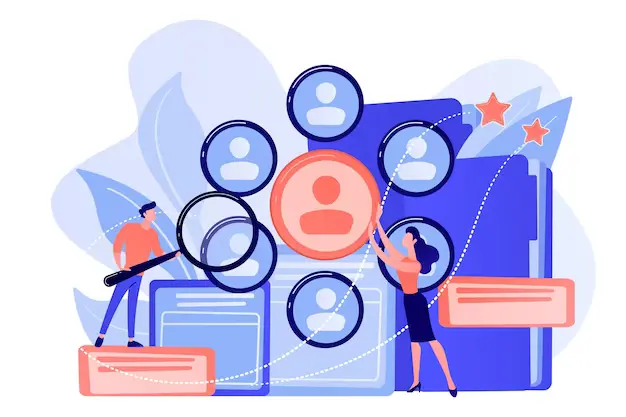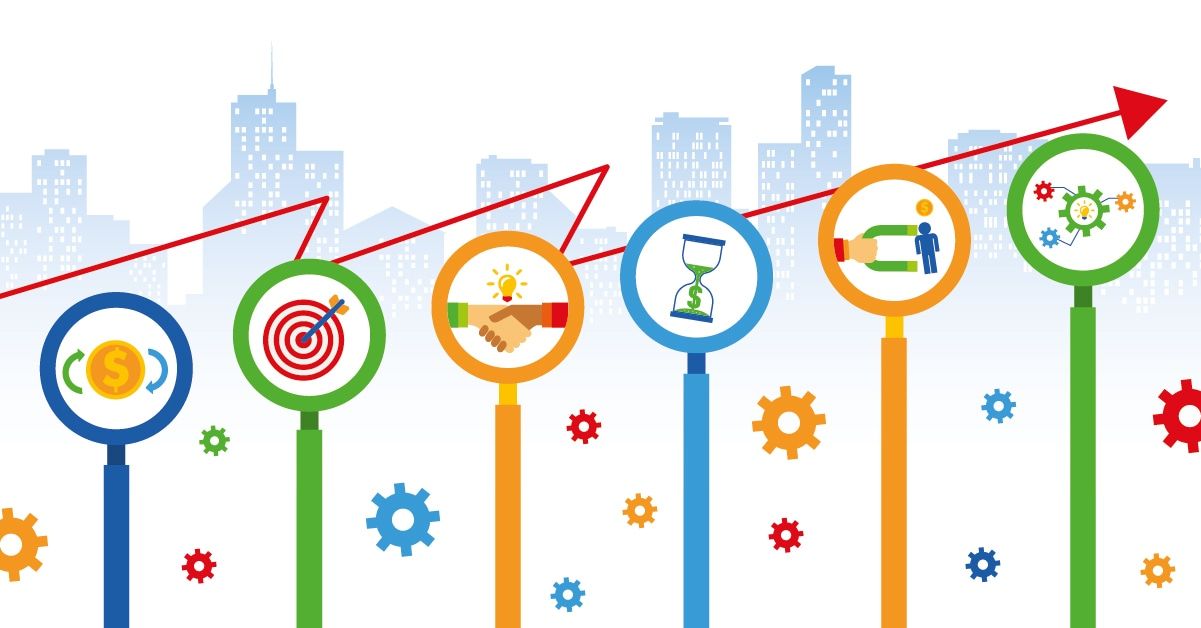Employee Selection Process [15+ Steps}
5 Minutes read

Selection of an employee is one of the most critical business decisions for every company.
A suitable employee can help you attain great business heights, however, a wrong hire can degrade your business performance exponentially.
Hence, we are here with a detailed guide to improve the selection process of an employee in your company. Here you will get answers to the following queries:
- What are the selection process steps for an employee?
- What you must remember and avoid while selecting an employee?
- How can AI help while selecting an employee?
Employee selection becomes more complex if you do not have an experienced team of recruiters. For all such company owners, HyreSnap Interview as a Service is the best choice in 2023.
It is a modern interview outsourcing platform that has a huge team of 500+ subject matter experts to help you conduct technical interviews without any hurdles.
For now, let’s move and and learn how you can improve the selection process of an employee in your company:
The employee selection process is a crucial component of talent acquisition. It involves multiple steps to identify and hire the right candidates for a job. Here are 15+ common steps in the employee selection process:
- Identifying the Hiring Need: The process begins with identifying the need for a new employee, often triggered by a vacancy or an increase in workload.
- Job Analysis and Description: Develop a detailed job analysis to understand the role's responsibilities and create a comprehensive job description.
- Posting Job Vacancy: Post the job vacancy on various platforms, such as job boards, company websites, and social media.
- Resume Screening: Review resumes and applications to shortlist candidates who meet the basic qualifications.
- Pre-employment Tests and Assessments: Some positions require candidates to complete pre-employment tests, such as skills assessments or personality assessments.
- Initial Screening Interview: Conduct brief phone or video interviews to assess candidates' communication skills and initial fit for the role.
- Interviews: Conduct one or more rounds of interviews, including behavioral, technical, or panel interviews.
- Reference Checks: Contact the candidate's provided references to verify qualifications, work history, and character.
- Background Checks: Perform background checks to ensure candidates have a clean criminal record and the claimed work history is accurate.
- Skills Testing: Some roles may require candidates to complete skills tests or job-related assignments to assess their abilities.
- Assessment Centers (for complex roles): In some cases, candidates are invited to an assessment center where they complete various exercises and tasks to demonstrate their skills and abilities.
- Final Interview: The last interview round, often with top candidates, involves discussions about job expectations, culture fit, and salary negotiations.
- Decision-Making: Evaluate candidates' performance in interviews, assessments, and reference checks to select the best fit for the position.
- Job Offer: Extend a formal job offer, including details on compensation, benefits, and other terms and conditions of employment.
- Acceptance and Onboarding: Once the candidate accepts the offer, initiate the onboarding process, which includes completing paperwork, training, and integration into the organization.
- Background Verification (Post-Offer): After the job offer, perform a comprehensive background check, particularly for sensitive positions.
- Medical Examination (if required): Some positions, especially in healthcare or safety-critical roles, may require candidates to undergo a medical examination.
- Probation Period: Many companies have a probationary period during which a new employee's performance is closely monitored, and feedback is provided.
- Orientation and Training: Provide orientation and training to help the new employee adapt to their role and the organization.
- Performance Evaluation: Periodically evaluate the employee's performance to ensure they meet the expectations and goals set for their role.
These steps can vary depending on the organization, industry, and specific job requirements. Customizing the selection process to align with your company's needs and values is essential for making effective hiring decisions.
Selecting the right employee is a critical process that can significantly impact an organization's success. Here are key things to remember and common pitfalls to avoid during the employee selection process:
Things to Remember:
- Alignment with Company Culture: Ensure that the candidate's values and work style align with the company culture and values.
- Job Analysis: Base your selection process on a well-defined job analysis to identify the skills, qualifications, and qualities required for the role.
- Legal Compliance: Adhere to all applicable employment laws and regulations to prevent discrimination and ensure a fair process.
- Diversity and Inclusion: Strive for diversity in your workforce to bring different perspectives and experiences into the organization.
- Structured Interviews: Use structured interview questions and evaluation criteria to assess candidates consistently.
- Multiple Perspectives: Involve multiple interviewers and perspectives in the selection process to reduce bias and make well-informed decisions.
- Assessment Tools: Implement relevant assessment tools, such as skills tests or personality assessments, to evaluate candidates objectively.
- Candidate Experience: Create a positive candidate experience, regardless of the outcome, as it can affect your company's reputation.
- Communication: Provide timely and clear communication to candidates about their status in the selection process.
- Training and Onboarding: Develop a comprehensive onboarding program to help new hires acclimate to their roles and the organization.
Things to Avoid:
- Ignoring Diversity: Avoid selecting candidates solely based on familiar profiles or biases. Make an effort to foster diversity.
- Rushing the Process: Don't rush the selection process. Take the time needed to assess candidates thoroughly.
- Neglecting Reference Checks: Don't skip reference checks, as they can provide valuable insights into a candidate's background and work history.
- Overlooking Soft Skills: Don't focus solely on technical skills. Soft skills, like communication and teamwork, are equally important.
- Hiring on Impulse: Avoid making impulsive hiring decisions based on first impressions. Take time to evaluate and compare candidates.
- Ignoring Feedback: Don't dismiss feedback from interviewers and assessors. Consider diverse perspectives.
- Assuming Cultural Fit: Avoid assuming a candidate will be a good cultural fit without evidence. Assess cultural fit objectively.
- Inadequate Training: Don't neglect to train your staff involved in the selection process on best practices and compliance with employment laws.
- Inconsistent Process: Maintain consistency in the selection process to ensure a fair evaluation of all candidates.
- Not Communicating Rejection: Always provide feedback and inform candidates when they are not selected to maintain a positive candidate experience.
- Bias and Discrimination: Be vigilant about unconscious bias and avoid any form of discrimination during the selection process.
- Inadequate Documentation: Keep thorough records of the selection process to ensure transparency and defend against legal challenges.
By remembering these best practices and avoiding common pitfalls, you can create a more effective and fair employee selection process that leads to better hiring decisions and contributes to the success of your organization.
Artificial Intelligence (AI) can play a pivotal role in optimizing the employee selection process. Here's how AI can be leveraged to assist in selecting the right candidates for a job:
- Resume Screening and Matching: AI-powered tools can quickly scan and analyze a large volume of resumes, identifying relevant skills, qualifications, and experience. These tools can also match candidate resumes to job descriptions, saving recruiters valuable time.
- Skills Assessment: AI-driven skills assessment platforms can evaluate a candidate's technical skills and abilities through coding challenges, quizzes, or simulations, providing a more accurate assessment of their competencies.
- Video Interview Analysis: AI can analyze video interviews, considering factors such as facial expressions, tone, language, and responses to assess a candidate's suitability and cultural fit for the role.
- Chatbots for Initial Screening: Chatbots can engage with candidates early in the application process, asking preliminary questions and gathering essential information to determine if they meet minimum qualifications.
- Predictive Analytics: AI can use predictive analytics to analyze historical hiring data, identifying which candidates are more likely to succeed in the role based on factors like past job performance and personality traits.
- Cultural Fit Assessment: AI tools can assess a candidate's fit with the company culture by analyzing their responses to behavioral questions and comparing them to established cultural norms.
- Bias Reduction: AI algorithms can help reduce unconscious bias in the selection process by focusing on objective data and removing human subjectivity.
- Customized Candidate Recommendations: AI can provide recruiters with candidate recommendations based on their skills, experience, and the specific job requirements, helping to identify the best fit for the role.
- Time and Cost Efficiency: AI streamlines manual processes, saving time and reducing costs associated with initial resume screening and candidate assessments.
- Feedback Analysis: AI can analyze feedback from interviews and candidate evaluations to identify patterns that lead to successful hires, enabling recruiters to refine their selection criteria.
- Enhanced Candidate Experience: Chatbots and AI-driven communication can provide candidates with prompt responses, improving their experience throughout the selection process.
- Sourcing Passive Candidates: AI can help identify and engage with passive candidates who may not be actively seeking new opportunities but are a good match for your organization.
- Continuous Learning: AI systems can learn from past hiring successes and failures, improving their accuracy in predicting suitable candidates for future roles.
- Language Processing: AI can assess candidate responses and communication to determine their language proficiency, which is crucial for multilingual roles.
- Data-Driven Decision-Making: AI generates insights from large datasets to assist HR professionals in making data-driven decisions during the selection process.
AI streamlines the selection process, enhances objectivity, and contributes to making more informed hiring decisions. However, it should be used responsibly and in conjunction with human judgment to ensure that the process remains inclusive and unbiased, treating all candidates fairly.
We have listed all the essential guidelines to improve the employee selection process in your company. However, you can also dodge this interview hurdle from your hiring process by using HyreSnap Interview as a Service (IaaS) platform.
HyreSnap IaaS uses AI technology along with human intelligence of 500+ subject matter experts to conduct analytical interviews for your company without affecting your inhouse processes. Below are some highlighting features of this marvelous platform:
Selection of a suitable employee is very essential for your organizational growth. Hence, we highly recommend following these above-mentioned guidelines to keep improving your hiring process and selection criteria.
Apart from this, if you need additional recruitment or interview assistance, contact our experts at info@hyresnap.com. We will help you remove all the hiring hurdles and improve your employee selection in 2023.

